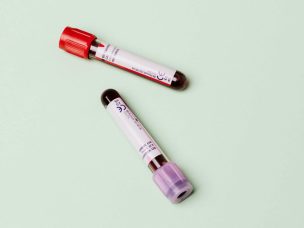The apolipoprotein B/A1 ratio can be used to predict the amount of tissue prolapse seen on an optical coherence tomography scan, and it is linked to how easily the apolipoprotein B/A1 plaque can break, according to a recent single-center, cross-sectional analysis.
The apolipoprotein (Apo) B/A1 ratio is considered a reliable predictor of atherosclerotic cardiovascular disease. The ratio is also important for evaluating myocardial infarction risk. In patients with stent implantation, tissue prolapse poses a risk for myocardial necrosis and acute or subacute thrombosis.
This study assessed the relationship between the Apo B/A1 ratio and tissue prolapse assessed via optical coherence tomography (OCT). The findings are published in the International Journal of Cardiovascular Imaging.
Baseline Characteristics
The study included a total of 213 patients who underwent percutaneous coronary intervention at a hospital in central China. The patients underwent an OCT examination before and after the procedure. After excluding patients with poor OCT imaging quality and those with insufficient data, the remaining patients were divided into low Apo B/A1 (n = 99) and high Apo B/A1 (n = 100) groups. The high Apo B/A1 ratio group included a significantly greater number of heart failure patients. That group also included patients with a significantly lower left ventricular ejection fraction and significantly higher levels of uric acid, creatine, and post-procedure creatine kinase–myocardial band.
Optical Coherence Tomography Examination
Patients in the high Apo B/A1 ratio group had significantly higher percentages of plaque erosion and plaque rupture. These patients also had a significantly higher proportion of thin-cap fibroatheroma and a significantly larger volume of tissue prolapse.
Plaque Characteristics and Tissue Prolapse Volume
The patients were divided into a low tissue prolapse volume group (< 1.43 mm3) and a high tissue prolapse volume group (≥ 1.43 mm3). The high-volume group patients had significantly larger lipid arcs and stent diameters and significantly smaller fibrous cap thicknesses. These patients had a significantly greater percentage of thin-cap fibroatheroma, lipid-rich plaque, slow or no flow phenomenon, and intracoronary thrombus.
Apolipoprotein B/A1 and Tissue Prolapse
According to multivariate logistic regression analysis, Apo B/A1 ratio, intracoronary thrombus, and thin-cap fibroatheroma were found to be significantly correlated with high tissue prolapse volume. The ratio was positively associated with the volume of tissue prolapse.
Source:
Du, Y., Zhu, B., Liu, Y., Du, Z., Zhang, J., Yang, W., Li, H., & Gao, C. (2024). Association between apolipoprotein B/A1 ratio and quantities of tissue prolapse on optical coherence tomography examination in patients with atherosclerotic cardiovascular disease. The International Journal of Cardiovascular Imaging. https://doi.org/10.1007/s10554-023-03023-5









